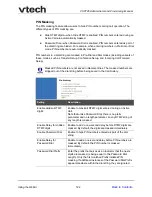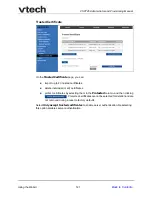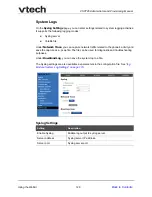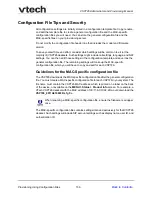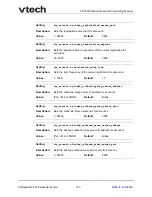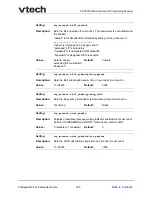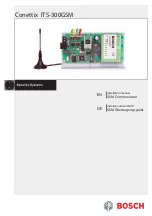
Provisioning Using Configuration Files
136
VSP726 Administrator and Provisioning Manual
Configuration File Tips and Security
All configuration settings are initially stored in a configuration template file. Copy, rename,
and edit the template file to create a general configuration file and the MAC-specific
configuration files you will need. You can store the general configuration file and the
MAC-specific files on your provisioning server.
Do not modify the configuration file header line that includes the model and firmware
version.
To save yourself time and effort, consider which settings will be common to all (or the
majority of) VSP726 desksets. Such settings might include call settings, language, and NAT
settings. You can then edit those settings in the configuration template and save it as the
general configuration file. The remaining settings will make up the MAC-specific
configuration file, which you will have to copy and edit for each VSP726.
Guidelines for the MAC-Specific configuration file
The VSP726 downloads the MAC-specific configuration file after the general configuration
file. You must create a MAC-specific configuration file for each VSP726 in your system. The
file name must contain the VSP726 MAC address, which is printed on a label on the back
of the device, or available on the
MENU > Status > Product Info
screen. For example, a
VTech VSP726 deskset with the MAC address of 00:11:A0:10:6F:2D would download the
VSP726_0011A0106F2D.cfg
file.
The MAC-specific configuration file contains settings intended exclusively for that VSP726
deskset. Such settings will include SIP account settings such as display name, user ID, and
authentication ID.
When renaming a MAC-specific configuration file, ensure the filename is all upper
case.

